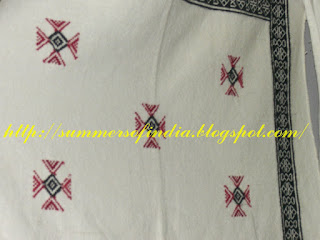Some regions of Andhra Pradesh have been hit by floods last month. Though there was not much loss of lives, there was of loss of property, crops, livestock worth millions of rupees.
India is a country of villages, where agriculture was and still is the main occupation. The crops that are grown here are diverse as the climatic conditions are. Our agriculture is dependent on monsoons mostly. The rivers and tanks are fed during the monsoon season.
This time around the monsoon which begins by mid June and continues till almost November-December, did not give much rains till mid September. A drought situation prevailed. But the heavy rains during the last weeks of September had resulted in floods in one of the main rivers-Krishna. Uasually in such situations the poor or lower middle class who settle along the banks of the rivers or tanks are the ones who are most affected. But this time around, the higher middle class and even the rich were not spared as Krishna waters entered the town of Kurnool. We all watched the horrifying scenes where people were perched atop fifth or higher storied buildings submerged up to fourth floor were crying out for help. Then they were rescued and shifted to camps. But their belongings and houses were destroyed by water. Even for the middle and upper middle class is it possible to replace all their belongins, repair their houses at one go?
They lost everything in their homes either to water or to the vandals who make most of it during the absence of the residents. All of us glued to our TV sets were praying for the safety of the people there. Hospitals, shops, police stations, everything was submerged under water. Thanks to our rescue teams, the people could at least save their lives.
The first few days we were busy packing food, water and medicines and sending them through various relief groups. Later on we pitched in by collecting cash, clothes, blankets, food stuff and other required articles as much as we could and send them there. We are still on the job.So many organisations, institutions, individuals are coming forward to help them. Specially the media helped a lot not only by telecasting the hardships, but they them selves rescued many and helped them by providing food and shelter. No matter how much we help, it is much less as millions, lost their everything and it will be months before they can even settle down. Those who were rich once and were giving a helping hand to others were seen embarrassed to be put in relief camps, but what could they do?
But what moved me the most were some little snippets of news. Children giving away their pocket monies and savings, beggars begging and donating from their earnings. One daily wage earner who is not sure of earning one square meal a day, donated his earnings of two days for flood victims. Its these selfless acts which should motivate other people who can afford but don't help out.
We have already decided not to celebrate Diwali and donate to those people. We are just going to restrict it to very low key-offering prayers and praying for all those brothers and sisters out there. How can we be happily celebrating when our own fellow country men are thrown out of their homes?
My humble request to any one reading this, please do help the victims by donating what you can however small it is . The Government or some organisations/institutions alone cannot help so many millions out there.
I just hope after reading my plea even one person helps in any way, it would be a blessing for all those suffering there........













